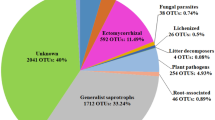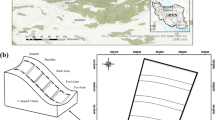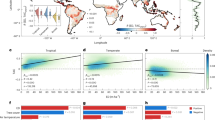Abstract
Mountain forest plants have a limited capacity for migration because altitudinal gradients usually set strict limits to plant species’ ranges and often present physical barriers against dispersal. Innate ‘islands’ of biodiversity, mountain forests are therefore particularly vulnerable to the effects of climatic change and habitat fragmentation, both key drivers of global species loss. Conservation of these ecosystems must for that reason rely on protecting not only large fragments but also small habitat patches and relictual vegetation along a wide altitudinal range.When large fragments in such ecosystems are no longer available, small fragments become an environmental priority. Striking examples of small mountain forest fragments are the church forests of the northern Ethiopian highlands. In a landscape dominated by degraded semiarid savanna, sacred groves represent the majority of all remaining patches of Afromontane forest. Previous studies in the region only covered few fragments and could not adequately estimate the conservation value of these forests. For that reason, we digitized 394 church forests in an area of half a million hectares by systematically scanning high spatial resolution satellite images (pixel resolution 0.8 m) in eight blocks in the northern highlands and calculated area, density, shape, isolation and configuration metrics. Forest cover is only 0.2%, much lower than usually estimated in the literature (4%). Fragment shape and spatial configuration in the north and northeast of the surveyed area (irregular forests on northwestern slopes with churches near the forest edge) are consistent with forest conservation after fragmentation, while forests in the south and west (regular round forests surrounding a central church) indicate conservation prior to widespread deforestation. Fragments are small throughout the region (2.5 +- 0.2 ha) and need expansion, but known vegetation differences between church forests related to the two different historical fragmentation processes call for different strategies for forest conservation and restoration.
Similar content being viewed by others
Article PDF
Author information
Authors and Affiliations
Corresponding author
Rights and permissions
About this article
Cite this article
Aerts, R., Pankhurst, R., Van Overtveld, K. et al. Historical deforestation patterns and the conservation value of church forests in the northern Ethiopian highlands. Nat Prec (2008). https://doi.org/10.1038/npre.2008.1786.1
Received:
Accepted:
Published:
DOI: https://doi.org/10.1038/npre.2008.1786.1



